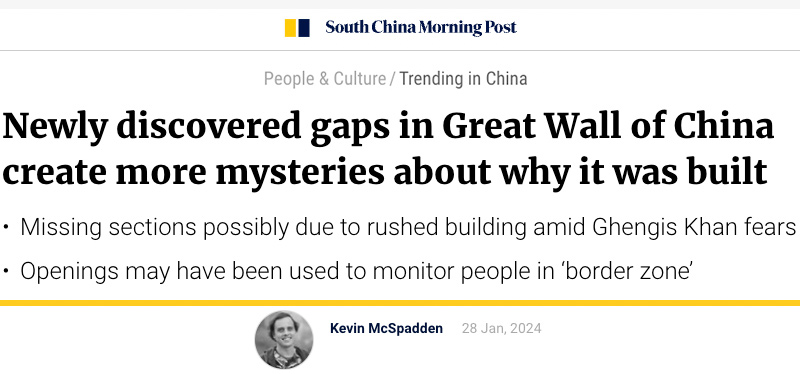
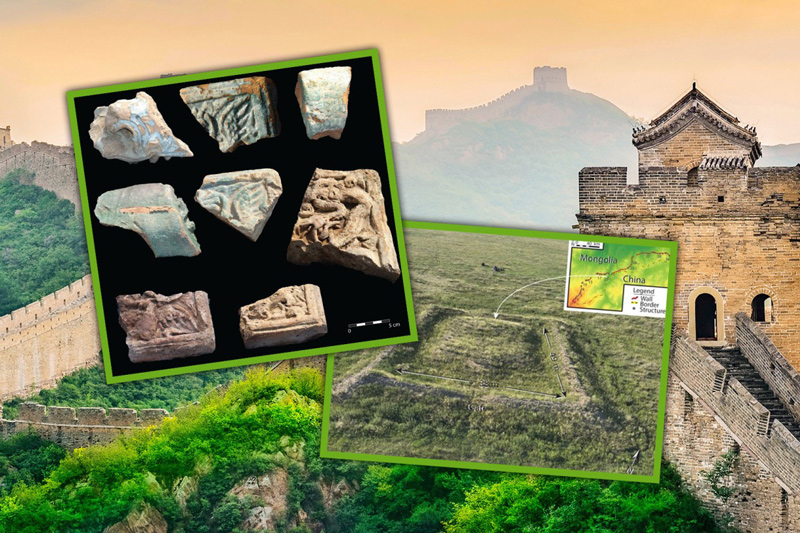
Archaeologists investigating the Great Wall of China’s “Mongolian Arc” have discovered large gaps in the wall were not the result of destruction, degradation or erosion, but were never built in the first place.
One explanation scientists have come up with for the missing sections is that the Chinese builders were working in haste, amid concerns about the threat posed by the rise to power of Ghengis Khan, according to a study published in the Journal of Field Archaeology in late December.
The Mongolian Arc – which stretches from northern China into Mongolia –was built sometime between the 11th and 13th centuries, far earlier than the most famous segments constructed during the Ming dynasty (1368-1644), and is believed to have been used by the Jin dynasty (1115–1234), but that has not been proven conclusively.
The stretch of wall, and why it was built, is an enduring mystery.
Its structure is far less impressive than the Ming-era wall, with the researchers suggesting that, in some parts, the trench was the more formidable part of the structure and the “wall” was often piles of rammed, excavated dirt.
Historical documents from the time – around 1200, just before the 1211 invasion of the Jin empire by Genghis Khan – discuss the quick construction of a “defensive wall section”.
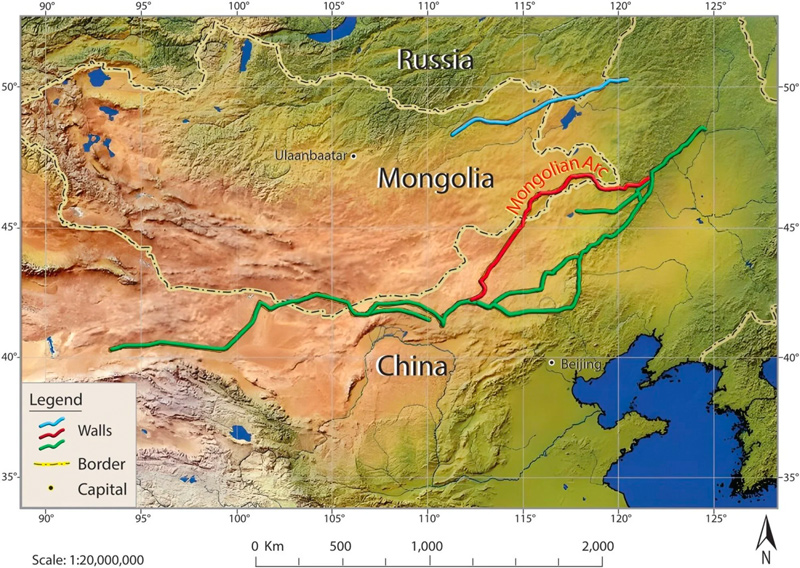
Archaeologists believe this was referencing a different segment of the Great Wall of China but could also be applied to the Mongolian Arc.
The idea that the Mongolian Arc was built hastily to defend against Mongol armies was first floated by the Chinese historian Wang Guowei more than 100 years ago, and the team’s research could represent the first archaeological evidence to support this theory.
However, Gideon Shelach-Lavi, a study author and professor at the Hebrew University Department of Asian Studies in Jerusalem, Israel, told the Post that when the archaeologists visited the site they discovered that it would have been a poor defensive structure.
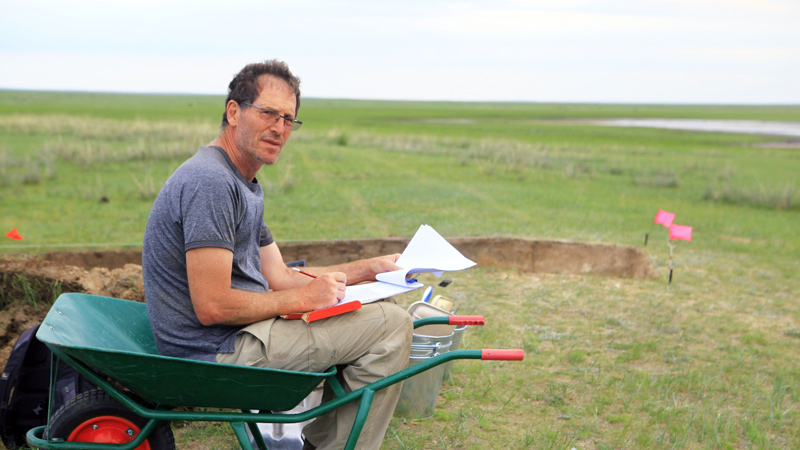
“As we conclude in the paper, it is more likely that the wall was built not to stop armies, such as those of Genghis Khan, but rather to stop small-scale invasions from local tribes as well as to monitor and control their movement and the movements of local nomadic people,” said Shelach-Lavi.
According to the authors, an important piece of evidence in support of this theory is that the walls did not have “very extensive visual command over their environment”.
“While these structures are not located at a great distance from each other, most of them cannot see or be seen from neighboring structures,” the authors wrote.
However, they acknowledge that the wall could have been a flawed better-than-nothing structure limited by time, cost and convenience.
Shelach-Lavi said the research sheds light on the complex relationship between China and its pastoral-nomadic neighbours.
It also suggests that the interactions were “much more complex and multi-sided than have been portrayed in the past”.
“[Our research] will help to clarify the history of North China and Mongolia during the very crucial period just before and during the rise of Genghis Khan. We still do not clearly understand how and why he was so successful and our research can shed light on this,” he said.
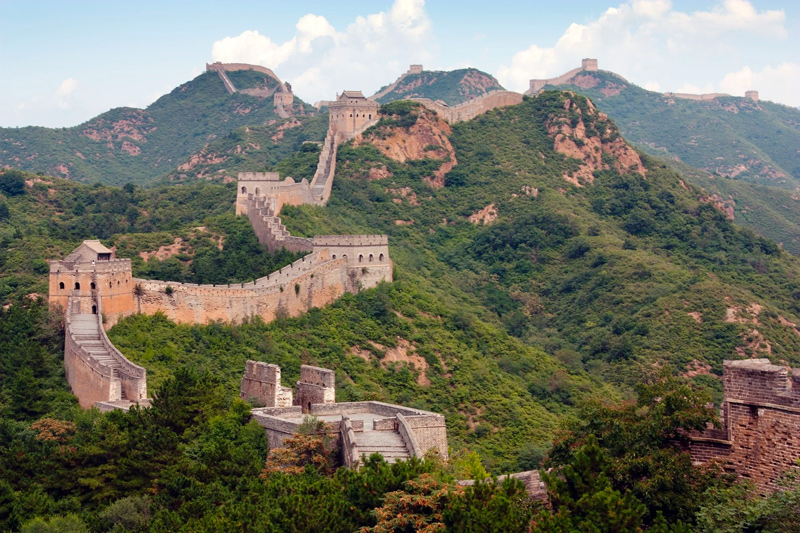
One misconception about the Great Wall of China is that it is one long uninterrupted structure.
In reality, it is a series of sections built across nearly two thousand years, with some strategic areas overlapping and others featuring large gaps.
Also, the wall was not solely used to defend China against invading armies, but served a variety of purposes, such as solidifying newly acquired territory or acting as a border boundary.
For example, the Mongolian Arc may have been part of a “border zone” and used to help control the movement of people, although it would not have been a strict line of demarcation like we see in modern walls such as the one along the US-Mexico border.